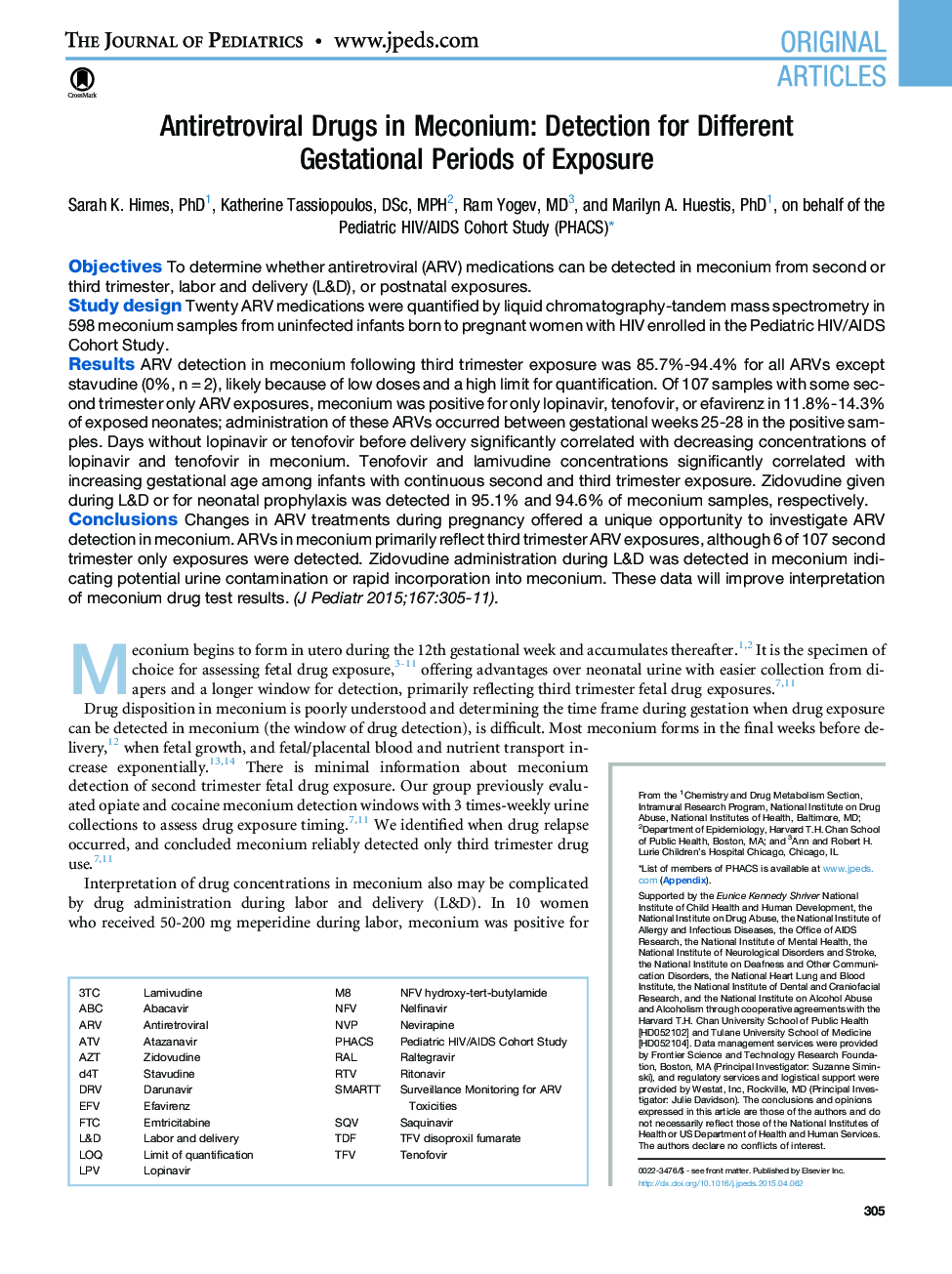| کد مقاله | کد نشریه | سال انتشار | مقاله انگلیسی | نسخه تمام متن |
|---|---|---|---|---|
| 6220457 | 1607440 | 2015 | 10 صفحه PDF | دانلود رایگان |
ObjectivesTo determine whether antiretroviral (ARV) medications can be detected in meconium from second or third trimester, labor and delivery (L&D), or postnatal exposures.Study designTwenty ARV medications were quantified by liquid chromatography-tandem mass spectrometry in 598 meconium samples from uninfected infants born to pregnant women with HIV enrolled in the Pediatric HIV/AIDS Cohort Study.ResultsARV detection in meconium following third trimester exposure was 85.7%-94.4% for all ARVs except stavudine (0%, n = 2), likely because of low doses and a high limit for quantification. Of 107 samples with some second trimester only ARV exposures, meconium was positive for only lopinavir, tenofovir, or efavirenz in 11.8%-14.3% of exposed neonates; administration of these ARVs occurred between gestational weeks 25-28 in the positive samples. Days without lopinavir or tenofovir before delivery significantly correlated with decreasing concentrations of lopinavir and tenofovir in meconium. Tenofovir and lamivudine concentrations significantly correlated with increasing gestational age among infants with continuous second and third trimester exposure. Zidovudine given during L&D or for neonatal prophylaxis was detected in 95.1% and 94.6% of meconium samples, respectively.ConclusionsChanges in ARV treatments during pregnancy offered a unique opportunity to investigate ARV detection in meconium. ARVs in meconium primarily reflect third trimester ARV exposures, although 6 of 107 second trimester only exposures were detected. Zidovudine administration during L&D was detected in meconium indicating potential urine contamination or rapid incorporation into meconium. These data will improve interpretation of meconium drug test results.
Journal: The Journal of Pediatrics - Volume 167, Issue 2, August 2015, Pages 305-311.e3
